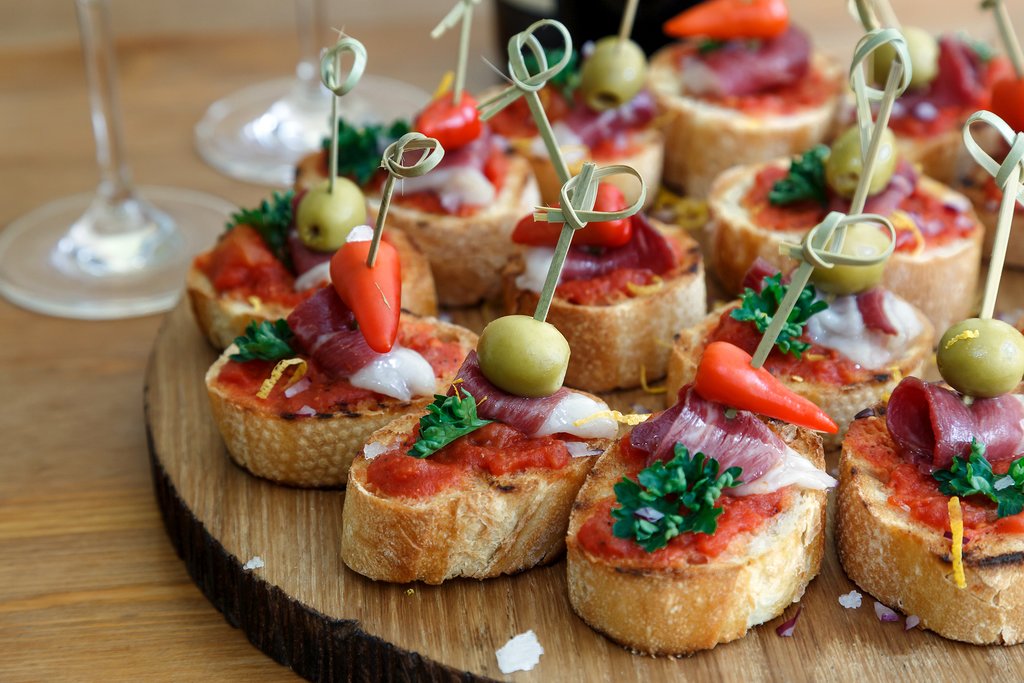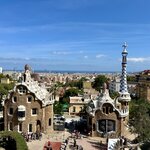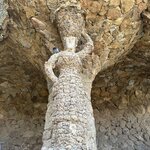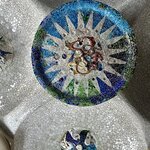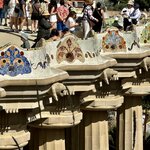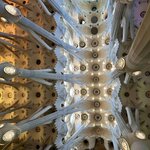Highlights
- Take a private cooking class in Barcelona taught by a master chef
- Enjoy an exclusive flamenco show at a local venue
- Discover Madrid's rich history on a private tour of the city
- Tour the Alhambra, the 9th Century Muslim fortress overlooking Granada
- Visit some of the highlights of Andalusia, like Seville, Ronda, and Málaga
Brief Itinerary
| Day | Highlights | Overnight |
|---|---|---|
| Day 1 | Arrive in Barcelona, Explore | Barcelona |
| Day 2 | Private Tour of Barcelona by Land & Air | Barcelona |
| Day 3 | Private Cooking Class with a Master Chef | Barcelona |
| Day 4 | Train to Madrid, Free Afternoon | Madrid |
| Day 5 | Private City Tour, Discover Madrid's Royal Legacy | Madrid |
| Day 6 | Free Day in Madrid, Evening Flamenco Experience | Madrid |
| Day 7 | Train to Seville, Explore | Seville |
| Day 8 | Private City Tour of Seville | Seville |
| Day 9 | Explore an Andalusian Olive Oil Farm | Seville |
| Day 10 | Transfer to Málaga, Wine Tour in Ronda | Málaga |
| Day 11 | Picasso Museum & Food Tour | Málaga |
| Day 12 | Pilgrimage Walk from Málaga | Málaga |
| Day 13 | Day Trip to Granada, Tour the Alhambra | Málaga |
| Day 14 | Depart Málaga |
Detailed Itinerary
Day 1: Arrive in Barcelona, Explore

Welcome to Spain! Upon arrival at Barcelona's El Prat Airport, a private driver will transfer you into the city, where you can check into your four-star hotel and unwind. You'll then have the afternoon free to explore on a self-guided tour.
First, visit Mount Montjuïc, a famous hill that stands 1,988 feet (606 m) high and overlooks the Port of Barcelona. Take the Montjuïc Cable Car from the metro station near Olympic Park, which takes you up to the 17th-century Castle Montjuïc and offers panoramic city views. You can also access Montjuïc via cable car from Barcelona Beach and by a funicular elevator adjacent to the cable car.
The Poble Espanyol is also fun to visit. Constructed in 1929, this open-air museum features over 100 recreated buildings in the style of traditional Spanish villages. When the sun goes down over the city, make sure you're near the Magic Fountain of Montjuïc, named for the dazzling display of water and colored lights that occur after dark. It's the best free show in the city, one whose effect is heightened by the hundreds of spectators and a communal atmosphere.
Day 2: Private Tour of Barcelona by Land & Air

After breakfast at the hotel, you'll meet a local guide who will whisk you away in a chauffeured vehicle for a half-day tour. The destinations are some of the most astounding works by the legendary Catalan architect Antonio Gaudí.
First, you'll visit Park Güell. Located atop Carmel Hill in north Barcelona, this UNESCO World Heritage Site is a fine example of Gaudí's boundary-pushing modernist style. Interestingly, it also has a storybook quality due to the bright colors and smooth organic shapes. The park takes up 42 acres, and you'll be able to marvel at every building as you stroll the myriad walkways and gardens. There are also incredible views at many points in Park Güell that look out over the city.
Next is the Sagrada Família, the iconic Roman Catholic basilica that's an impressive mix of Gothic, Catalan-modernism, and Art Nouveau architectural styles. Despite construction on the church beginning in 1882, it's still technically listed as under construction and was only consecrated in 2010. Upon arrival, the guide will reveal insight into the Sagrada Família's fascinating history, and you'll glean even more info as you explore the interior.
Then, you'll head to the famous boulevard Passeig de Grácia. It's home to upscale boutiques as well as two buildings by Gaudí. The first is the Casa Milà apartment building, nicknamed "La Pedrera" because its facade resembles a stone quarry. Casa Batlló is another modernist masterpiece of a residential building. Locals have christened it Casa dels Ossos, or "House of Bones," due to the skeletal nature of its design.
After touring Barcelona's streets, it'll be time to change perspective and take to the skies on a helicopter tour. This excursion lasts a brisk 10 minutes, during which you'll be able to look down on every major landmark in the city as well as the impressive coastline. It's the perfect activity in which to cap your second day in Barcelona.
Day 3: Private Cooking Class with a Master Chef

Today in Barcelona, food takes center stage as you participate in an exclusive cooking class of traditional Spanish cuisine. You'll learn skills that you can use to impress friends and family back home when you cook them authentic Spanish tapas.
This gastronomic workshop begins with a visit to a local market with your private teacher/master chef. With fresh produce in hand, you'll head to a private kitchen in downtown Barcelona and prepare your very own Spanish tapas from scratch under the tutelage of your chef. A fitting end to this experience is when you get to sit down and enjoy your delicious creations.
After the cooking class, you'll have a few hours to enjoy the city. If shopping is on your radar, visit the boutiques around the Passeig de Gràcia. And if the cooking class piqued your appetite, you can find many options for dinner, complete with great local wine on Carrer De Blai in central Barcelona. It's known as the "tapas route," as it features many spectacular tapas bars.
Day 4: Train to Madrid, Free Afternoon
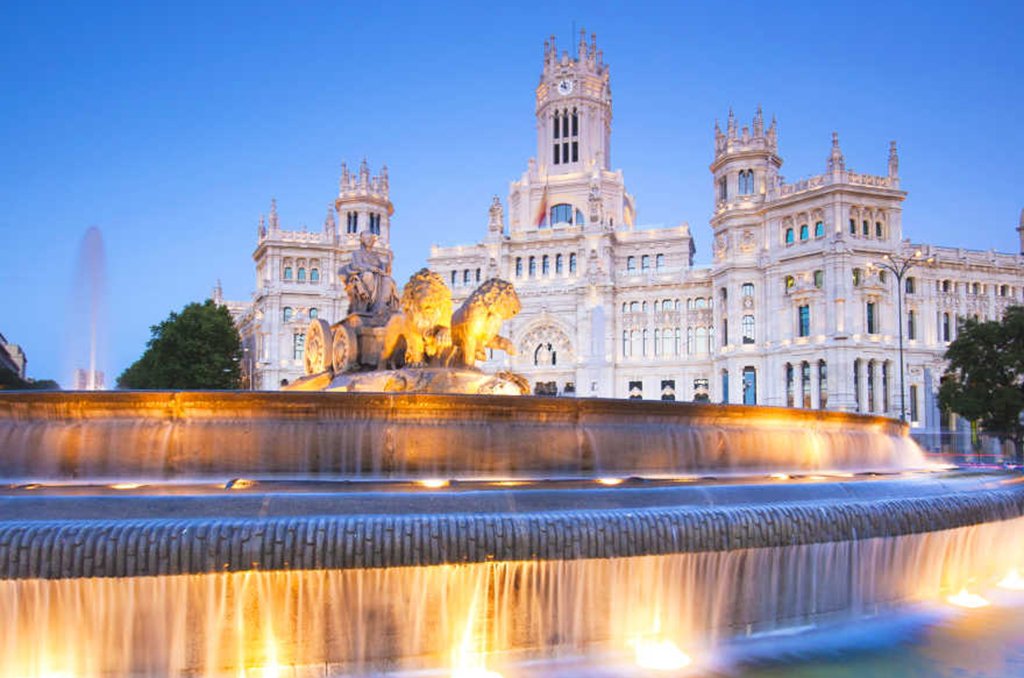
After breakfast at the hotel, you'll transfer to the train station, where you'll embark on a 3.5-hour journey to the nation's capital. Upon arrival in Madrid, you'll check into your downtown hotel and then have the rest of the day free to explore the city at your own pace. Tomorrow will be the grand tour of this historic metropolis, so you might want to opt for more leisurely activities this afternoon and evening.
Perhaps you could take in a show. Gran Vía is Madrid's answer to Broadway, and on it, you'll find plenty of theaters showcasing plays and musical productions, many of which are geared toward the whole family. Needless to say, the options for culture in this city are vast, and you could also visit museums, art galleries, and live music venues if the mood strikes.
When night falls, indulge in Madrid's world-class culinary scene. If you want to dine amid history, head to the city center and Botín, which is listed in the Guinness Book of World Records as the oldest restaurant in the world—it first opened its doors in 1725. No less than Ernest Hemingway described it in his seminal novel The Sun Also Rises as the best restaurant on earth.
Day 5: Private City Tour, Discover Madrid's Royal Legacy

Today, you'll enjoy a half-day tour of Madrid led by an expert local guide. Over the course of its long history, Madrid has seen many different eras, and today, the city adorns itself with that history in its architecture, public spaces, and culture. An organized tour is ideal, as your guide can reveal insight into how these different time periods influenced Madrid's different neighborhoods and buildings, as well as point out the most interesting sights.
One area you'll visit that's awash in regal splendor is the Madrid de los Austrias. It was built in the 16th century during the reign of the Hapsburg Dynasty's first ruler, Charles I. Located in the city center, it's home to one of the grandest plazas in Spain, the Plaza Mayor, once the heart of Old Madrid.
Also here is the Royal Palace, which was the official home of the Spanish monarchs until 1931. You'll tour both the grounds and interior of this 3,418-room monument to opulence, entering the parade ground, the chambers of Charles III, several salons, the Royal Chapel, and the Hall of the Crown, which displays Charles I's crown, scepter, and throne.
Later you could visit El Retiro Park. This 308-acre expanse of verdure is the green lung of Madrid, abounding with sculptures, fountains, and a man-made lake perfect for taking a boat trip. There are also must-visit gardens here, including the Jardín de Vivaces (Garden of Vivacious Plants), Jardines de Cecilio Rodríguez (inspired by the Andalusia region), and a garden home to over 4,000 roses (best to see these blooms from May through June).
Chat with a local specialist who can help organize your trip.
Day 6: Free Day in Madrid, Evening Flamenco Experience

Today is a more relaxed day in Madrid, free of rigid timetables. You can spend the morning enjoying the hotel amenities or get out and explore the city on foot. If you're a sports fan, you can opt for a treat in the form of a tour of the Estadio Santiago Bernabéu, the 81,000-seat stadium home to the Real Madrid football club. You might also consider taking a stroll along Fuencarral Street, which runs through downtown and is a popular shopping area full of upscale brands and designer boutiques.
In the evening, you'll have the chance to experience and appreciate one of Spain's premier cultural offerings: flamenco. This musical style enjoys a rich heritage that dates back to the 9th century when the music and dances of immigrants in the Andalusia region of the country mixed with the cultures of local Moors and Jews. Over the centuries, the intermingling of these various influences synthesized to produce the style of flamenco that has come to define Spanish folkloric music. Experiencing a flamenco show is an absolute must for anyone visiting Spain. For a more immersive understanding of this captivating musical style, join a guided tour that delves into every facet.
Your journey begins with a private tour of a guitar workshop, where local artisans skillfully craft these traditional instruments. Next, you'll visit a dance academy that teaches the future stars of flamenco. And don't forget the shoemaker who meticulously designs the special footwear for these passionate dancers. As the evening progresses, you'll have the opportunity to witness a sultry tango show, where professional dancers bring the dancefloor to life. Throughout the performance, your guide will unravel the intricacies and significance of the dance so you can better appreciate this artistic expression.
Once the final notes of the performance fade away, you'll find Madrid coming to life. This is a city that truly thrives after dark, making it the perfect time to head to Calle Ponzano. Located in the northern part of the city, this bohemian enclave is an ideal spot to indulge in a late-night tapas dinner, followed by some memorable bar-hopping.
Day 7: Train to Seville, Explore

After breakfast in Madrid, a driver will pick you up at your hotel to transfer to Atocha Train Station, where you'll board a high-speed train to Seville. The journey is a pleasant three hours, during which you can relax in your reclining seat and watch Spain's beautiful landscapes pass by through the window.
Upon arrival in Seville, a driver will meet you to transfer to your hotel for check-in. After settling in, we recommend you head out and explore a bit. Seville is the capital of Spain's Andalusia region, and there's no shortage of amazing sights here.
One example is the Plaza de España, which was built in 1928. For an impressive modern landmark, head to the Old Quarter and Plaza de la Encarnación. Here, you'll find Metropol Parasol, a massive wooden structure designed by German architect Jürgen Mayer and which opened in 2011. Known locally as Las Setas (The Mushrooms), this icon of Seville is indeed fungi-like and capped with a curved honeycomb roof. You can take an elevator to the top, where you'll be treated to views of the city. And there's no better way to finish a day in Seville than by enjoying a sundowner at one of the city's famous tapas bars.
Day 8: Private City Tour of Seville

After breakfast, you'll head off with a local guide to explore this ancient hotbed of culture. You'll visit the Seville Cathedral, a 15th-century Roman-Catholic church home to the tomb of Christopher Columbus. It's a UNESCO World Heritage Site, the largest Gothic church in the world, and an awe-inspiring testament to pious grandiosity. You'll also see La Giralda, the cathedral's looming bell tower. There's a noticeable stylistic difference between the two structures, as this 12th-century pillar was originally built as a minaret for the Great Mosque back when Andalusia was ruled by the Moors.
Then, you'll travel back to the era of the Christan conquest when you visit the Alcázar of Seville. This royal palace was commissioned for King Peter of Castile in the 14th century and was built over the site of a former Muslim fortress. It features well-manicured gardens, and the building itself is one of the finest examples of Mudéjar architecture in the nation.
After stopping at the Alcázar, you'll walk to the fashionable Santa Cruz neighborhood, which was once the Jewish Quarter in the city. It's a colorful and well-preserved part of the historic center, with many options for cafés and tapas bars—the perfect excuse to take a break and enjoy some small plates washed down with local wine. You can also visit crafts markets and local shops where seasoned artisans produce intricate silverwork and elegant garment embroidery.
After completing the half-day tour, you can return to your hotel and relax or continue to explore the town. Not surprisingly, Seville's gastronomic scene is incredible. Know that locals love to compliment an evening of tapas with a nightcap at a favorite watering hole.
Day 9: Explore an Andalusian Olive Oil Farm

One of Spain's most popular exports worldwide is its high-quality olive oil. You'll witness the production process firsthand on an exclusive tour of an Andalusian olive oil estate. Located just 30 minutes outside Seville, this estate has quite the history, as it was right here in the 17th century that Christopher Columbus' son Hernando began exporting olive oil to the New World.
Upon arrival in the morning, you'll be treated to a typical Andalusian breakfast of coffee, hot chocolate, churros, and toast with olive oil and tomatoes. Afterward, you'll tour the old manufacturing center and view the 16th-century olive oil presses. As part of the estate visit, you'll have the opportunity to explore the inner workings of the olive oil production process and learn about the modern methods they use. Also, at the estate is one of the biggest olive oil museums in the world. A visit to this museum reveals the characteristics and qualities of olives and how their oil has evolved to become one of the most popular culinary ingredients in the world.
While on the estate, you'll also have the chance to unwind amid the beautiful Andalusian landscape. The vast grounds boast expansive fields, graceful purebred Spanish horses, tranquil Arabic gardens, and an impressive private collection of horse-drawn carts spanning from the 7th to the 19th centuries. There's an abundance of activities here, both for you and your family.
To conclude the excursion, you'll engage in a tasting session featuring the estate's own olive oils, allowing you to put your newfound knowledge into practice. After returning to Seville, the remainder of the day is yours to shape as you like. You could stroll the Plaza de América at Maria Luisa Park, walk around the neighborhood of Triana, or pick a restaurant for a dinner accompanied by a flamenco show.
Day 10: Transfer to Málaga, Wine Tour in Ronda

In the morning, a driver will meet you for your southward journey from Seville to Málaga. This Mediterranean port city is a mix of the old and the new. It enjoys an enviable location on Spain's Costa del Sol, a stretch of Mediterranean coast that runs 98 miles (159 km) south from Málaga past Marbella toward Gibraltar famous for its abundance of golden beaches.
The journey takes about three hours, but you'll break up the drive with a stop in Ronda. This ancient city dates back to the 6th century when it was first settled by the Celts. It's a storybook locale carved out of a mountain and situated over a deep gorge. Like many places in Spain, Ronda is famous for its wine culture. You'll discover this firsthand by visiting a winery that was a convent up until the 16th century. The owner will lead a guided tour of the grounds, which feature, among other things, hanging vines, fruit trees, and well-manicured gardens. It's amid this pleasant scenery where you'll sit down for a lunch cooked specially by the owner. Naturally, this includes a tasting of the various wines produced on-site.
Afterward, you'll continue the drive for two more hours from Ronda to Málaga. If there's time left in the day, and if you have the interest, you can stop at some of the famous White Villages nestled in the Sierra de Grazalema Mountains. One of the most beautiful is Zahara de la Sierra. Sitting atop a mountain, this village was a Moorish outpost until the early 15th century. You can see remnants of this in the iconic castle perched atop the rocky mountaintop just above the town. After visiting Zahara de la Sierra, you'll continue on to Málaga, where you'll check into your hotel and unwind for the evening.
Day 11: Picasso Museum & Food Tour

Besides its medieval cathedrals and enviable location on Spain's Costa del Sol, Málaga prides itself on being the birthplace of one of the most prominent and revolutionary artists in history, Pablo Picasso.
Today's exclusive tour of Málaga is centered around this painter, sculptor, and father of Cubism. The first stop is the Picasso Museum, located in the historic center of the city. It's home to almost 300 works by Málaga's most famous son, all donated from Picassos' family estate.
Even if you're an art novice, don't worry; you'll be accompanied by an expert guide who will lead you through the museum's various exhibits, discuss interpretations of the paintings, and reveal insight about Cubism along the way. Consider it an entertaining education and exploration into the life and work of one of the giants of 20th-century art.
After your cultural tour of the life and work of Picasso, you can continue to delve into the spirit of Málaga, this time through its gastronomy. You'll head to a traditional tapas bar and sample a variety of small plates featuring ingredients the city is known for. Naturally, this includes seafood like anchovies and salted fish, ajo blanco (garlic and almond soup), and cured meats like jamón ibérico and salchichón de Málaga, a type of Spanish summer sausage. Expect the plates you enjoy to be artfully presented with elevated and colorful ingredients—Picasso himself would approve.
Day 12: Pilgrimage Walk from Málaga

Today, you'll enjoy a quintessentially Spanish cultural activity. After breakfast at your hotel, you'll partake in the centuries-old folkloric tradition known as romería.
This long-standing activity involves a crowd of pilgrims walking from the city to a religious sanctuary in the countryside. The procession is the whole point of the celebration, and those on the route dress in costumes, ride horses, and carry flags, all accompanied by live music and fireworks. There's no shortage of food stalls, bars, and drink vendors, too. It's an organized experience, but don't worry about getting lost—just follow the crowd of merrymakers, horses, and parade floats, and they'll lead the way.
After the party, you'll have a break for a picnic lunch. Then, it will be time for the 30-minute ride back to Málaga, where you'll have the rest of the day free to explore. Perhaps visit the hilltop Gibralfaro Castle, which dates to the 10th century, or stroll around the Port of Málaga. For culture, you can visit the Picasso Museum, the Carmen Thyssen Museum (which features Andalusian paintings from the 19th century), or the Centre Pompidou Málaga, a contemporary art museum housing works in a glass cube.
Day 13: Day Trip to Granada, Tour the Alhambra

In the morning, a driver will meet you for a two-hour drive northeast and into the Sierra Nevada Mountains to Granada. This is another historic city that was once the last bastion of Al-Andalus (Muslim Spain) when it was ruled by the Moors. You can see examples of this history in the form of Granada's most famous landmark, the Alhambra, which receives more than two million visitors annually.
This imposing Muslim fortress was built atop a hill overlooking Granada and dates to the 9th century. It was rebuilt in the 14th century by the Nasrid Dynasty and served as a Moorish palace until 1492, when, after the Christian reconquest, it became the Royal Court of Ferdinand and Isabella. It's now a UNESCO World Heritage Site, and on tour, you'll walk through its grand halls and stroll the Generalife Gardens, which are filled with colorful flowers and fountains and offer panoramic views of the city down below.
Day 14: Depart Málaga

It's time to say farewell. Depending on your flight time, you can squeeze in one last walk through the streets of Málaga and view the city's extraordinary sights. At the designated time, a private driver will pick you up at your hotel and transfer you to the airport for your flight home. Adiós!
More Great Spain Itineraries
Looking for more inspiration for your trip to Spain? Check out these other Spain itineraries, explore different ways to spend two weeks in Spain, or discover the best time to visit Spain.
